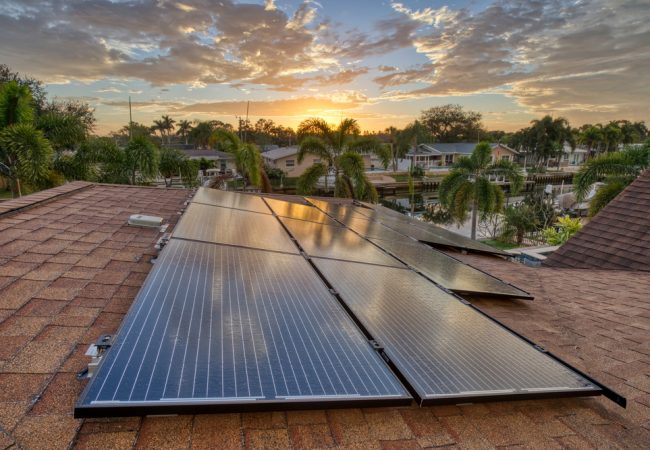Going solar helps you reduce your electric bills and opens the door to significant tax savings through the federal solar tax credit. This is one of the best incentives for residential solar panels in Florida, saving you 30% on your solar installation costs.
In this guide, we’ll explain exactly how the solar tax credit works, who qualifies, what expenses are covered, and how to claim it so you can make the most of this opportunity to save.
Heads Up: A recent proposal threatens to end the solar tax credit for systems installed after December 31, 2025. If you’ve been considering solar, act now to lock in 30% savings before it’s too late.
How the Solar Tax Credit Works
The federal solar tax credit goes by many names. You might hear it referred to as the solar tax credit, the Investment Tax Credit (ITC), or the Residential Clean Energy Credit. But whatever you call it, it’s the best incentive there is for home solar panel installation.
Here’s how it works:
- The tax credit allows you to reduce your federal income taxes by 30% of your solar installation costs for the year you install your system.
- For example, if you spend $30,000 on a solar system, your 30% credit will be worth $9,000.
- That means if you owe $10,000 in federal taxes, your credit reduces that amount to just $1,000.
- And if your tax credit exceeds what you owe, you can roll the remainder over to the following year.
Who Qualifies for the Solar Tax Credit?
If you’re a Florida homeowner, there’s a good chance you qualify for the solar tax credit.
To qualify, you must:
- Own your home (primary residence or second home, as long as it isn’t a rental property).
- Buy your solar system (cash or loan—leases don’t qualify).
- Install new solar equipment (used equipment isn’t eligible).
- Owe federal income taxes.
What Expenses Are Covered?
Almost all of the expenses related to a solar panel installation are eligible for the tax credit, including:
- Solar panels
- Solar batteries
- Solar inverters
- Racking/mounting equipment
- Wiring
- Installation costs
- Permitting fees
How to Claim the Solar Tax Credit
Claiming the solar tax credit is simple. All you need to do is complete IRS Form 5695, Residential Energy Credits, and file it with your annual tax return.
You must claim the credit for the year your solar panels were installed and turned on. If you turn your solar panels on before December 31, 2025, you’ll claim your credit in 2026, when you file your taxes for 2025.
Will the Solar Tax Credit Be Available Forever?
The solar tax credit won’t be around forever, and its expiration date might be coming up sooner than we expected.
The credit is currently set at 30% and will gradually decrease in the coming years. Here’s the official timeline:
- Now-2032: 30% tax credit
- 2033: 26% tax credit
- 2034: 22% tax credit
- 2035: Tax credit is eliminated for residential solar installations
This timeline was created by the Inflation Reduction Act of 2022, but there’s a new development you need to be aware of.
The House Ways and Means Committee has proposed ending the solar tax credit altogether by December 31, 2025. If passed, you won’t be able to claim the solar tax credit for solar panels installed after this year.
Nothing is set in stone, but these changes seem likely. If you’ve been thinking about going solar, we recommend acting sooner rather than later. If you wait too long, you could risk missing out on the solar tax credit and the huge savings it offers.
FAQS About the Solar Tax Credit
Is the solar tax credit refundable?
No, the solar tax credit is not refundable. If your credit is worth more than you owe in taxes, you will not receive a refund. But you can carry the remainder forward and use it the next year.
Do you get money back from the solar tax credit?
The solar tax credit is applied to your federal income tax liability, bringing the amount that you owe down. It is not a cash payment or a refund.
Does the solar tax credit carry forward?
Yes. If your tax credit is worth more than you owe, you can carry the remaining balance forward to the following year.
When does the solar tax credit end?
As of now, the 30% solar tax credit is available through 2032. However, recent proposals suggest it may end sooner, at the end of 2025.
Have Questions? We’re Here to Help!
Tax credits and incentives can be confusing. At Solcium Solar, we help you navigate the process so you can claim the highest savings possible.
Call (662) 689-2427 or contact us for a free solar consultation and take advantage of the solar tax credit before it’s too late.
Disclaimer: This information is intended for general guidance only. You should always consult a qualified tax professional for personalized advice about your specific situation.




